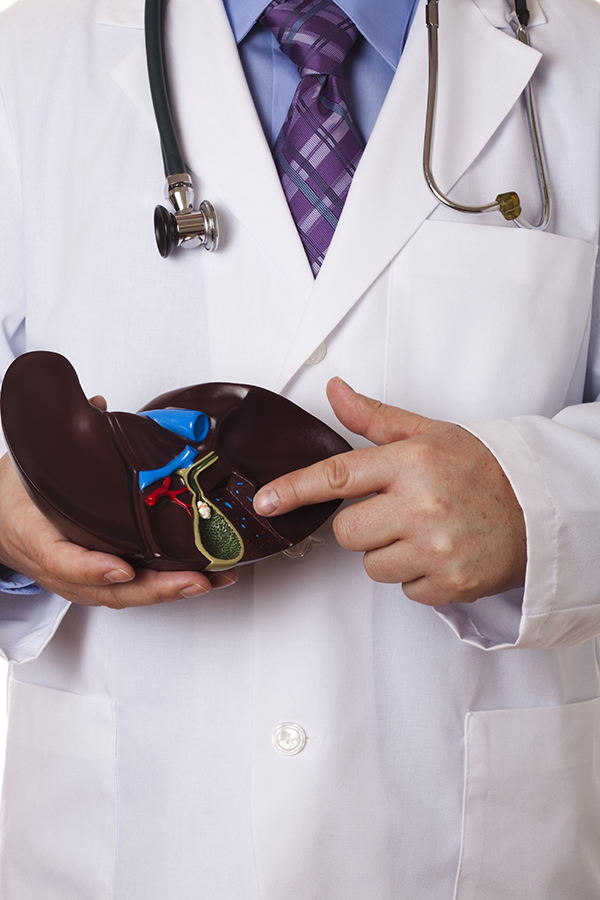Author: Justin Mckibben
It’s pretty common knowledge that consuming alcohol takes a toll on your body, and especially the liver. If you’re a drinker the longer you drink will consistently up the chances of developing a serious liver disease, and there are other risk factors that come into play besides drinking alcoholically. Being aware of these factors can help you in trying to curb your chances of serious liver complications, and for those who are struggling these factors may ultimately assist you in understanding the best treatment options for you.
Stages of Alcoholic Liver Disease
There are different stages of alcoholic liver disease:
- Fatty liver
- Alcoholic hepatitis (inflammation of the liver)
- Cirrhosis (fibrosis, or scarring, of the liver)
Dr. Pam Peeke is the author of “The Hunger Fix: The Three-Stage Detox and Recovery Plan for Overeating and Food Addiction” as well as the senior science advisor to Elements Behavioral Health. According to this expert, fatty liver and alcoholic hepatitis are “fairly prevalent,” but cirrhosis is a very different problem. Peeke states,
“One in five people who are alcoholics develop [alcoholic] hepatitis, and one in four develop cirrhosis. You’ll be at higher risk if you also have fatty liver—it’s those people who tend to be at higher risk for cirrhosis if they continue to drink.”
Data suggests that:
- About 90% of heavy drinkers develop fatty liver
- 10 to 35% of heavy drinkers will develop alcoholic hepatitis
- Up to 20% of heavy drinkers will develop cirrhosis
The good news is, some elements of cirrhosis are reversible, but in order for this to be possible Peeke says there has to be 100% abstinence in order to facilitate this kind of recovery. In the experience of most alcoholics, abstinence from consuming alcohol is an essential part of recovery, period.
These are 7 elements of alcoholic liver disease, and it is important to take these things into consideration when evaluating your drinking habits, because for those struggling to stop drinking, this may open your mind to the risks you run.
- How Much You Drink
This one is pretty obvious. Alcoholic liver disease typically occurs after years of heavy drinking. Not all alcoholics will get it, but the longer you drink and the more you drink, the more your chances increase.
- Consistency of Drinking
Consistently drinking heavily on a regular basis is actually a higher risk than drinking irregularly throughout the week, or even binge drinking on weekends and holidays.
Research has found that five drinks or more per day raised the risk of developing cirrhosis according. The risk of both hepatitis and cirrhosis is increased when consumption for 20 years or more is around:
- 60g or more per day for men
- 20g per day for women
- Gender
The damage caused by alcohol happens more acutely in women, so women are more likely to develop liver disease. For women it is more severe, happens much faster, and takes less alcohol to develop.
Women are more vulnerable than men for various reasons, including:
- Women secrete less alcohol dehydrogenase (which breaks down alcohol)
- Have a greater proportion of body fat (alcohol is soluble in water)
- Experience changes in fat absorption due to their menstrual cycles
- Genetics
Beyond gender, the full extent of the role genetics play in alcoholic liver disease is not yet understood, but more is being learned. It is believed that gene mutations actually predispose someone to both developing alcoholism and alcoholic liver disease. Some mutations in genes that may explain this genetic link are:
- ADH (alcohol dehydrogenase)
- ALDH (aldehyde dehydrogenase)
- CYP4502E1 (one of the many cytochrome P450 enzymes)
This is also connected to individual differences in the metabolism of alcohol.
- Immune System
A stronger immune system will of course have a better chance at surviving and fighting off liver disease. However a compromised immune system cannot, and thus increases the risk factor of liver disease.
Research has found that people with HIV or hepatitis C, or both, have an increased risk of advanced liver disease. It is known that these diseases increase death rate of liver cells.
Drinking in excess only compounds this problem and accelerates the process of weakening the immune system.
- Nutrition
Anything that makes it harder on the body to maintain its health increases the risk for developing liver disease, especially for drinkers. 2 big ones are:
- Obesity
- Diabetes
Many alcoholics have a habit of poor nutrition. Now more data on gut bacteria or the gut microbiome is just beginning to discover how these things are affected by alcohol, which can change gut permeability and lead to problems absorbing and digesting food.
Malnutrition also increases oxidative stress, which is known to promote liver disease by the depletion of circulating antioxidants, including vitamins A, C, and E, and glutathione. Ultimately poor dieting and nutrition continues to weaken the immune system, which opens you up to infections and complications.
- Physical Fitness
In addition to abstinence, regular physical activity is an essential factor in the continued health or the required treatment for the recovery of the liver. On top of the mental and emotional fitness that goes into recovery for alcoholics, physical fitness can co-exist with nutrition in a way that helps to nurture recovery, and revitalize the immune system for someone whose body has been suffering.
So many things factor into the gradual development of liver disease through excessive drinking or alcohol abuse, and so many people ignore the signs that their life-style has exposed them to these risks. Alcoholism is deadly in many ways, and many find that in order to change their health and preserve their future, they must change their lives, today! If you or someone you love is struggling with substance abuse or addiction, please call toll-free 1-800-951-6135
